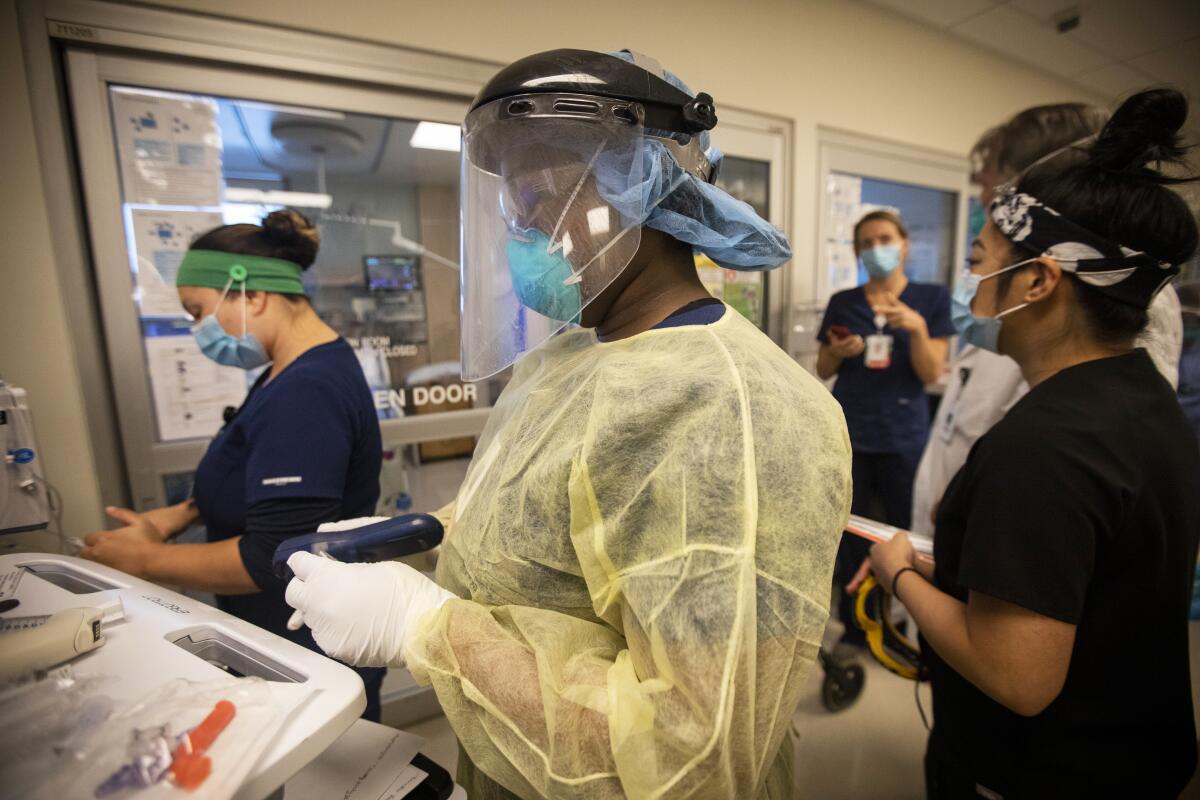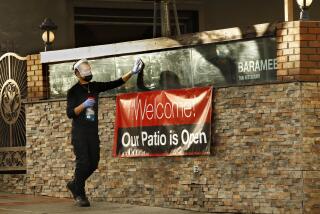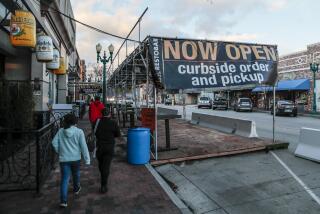33 million Californians face COVID-19 stay-at-home order that will restrict movements and business

A new stay-at-home order will be imposed on Southern California and the San Joaquin Valley Sunday night, as the coronavirus crisis spirals out of control with a speed that has exceeded health officialsâ most dire projections.
Some 33 million Californians will be subject to the new order, representing 84% of the stateâs population. The state mandated the restrictions in the Southland and Central Valley as capacity at hospitalsâ intensive care units hit dangerously low levels. Five Bay Area counties will also begin lockdown restrictions in the coming days despite not yet reaching the threshold at which such action is mandated by the state.
The rules are less sweeping than Californiaâs pioneering stay-at-home order in the spring, which is credited with slowing the first COVID-19 wave. But the new order will change daily life for many, especially in suburban Southern California counties like Orange and Ventura, which so far have enjoyed more open economies than hard-hit Los Angeles County.
Southern California and the San Joaquin Valley will implement the order Sunday at 11:59 p.m. Restaurants must halt in-person dining and can offer food only for delivery and takeout. Gatherings of people from different households will be prohibited, except for outdoor church services and political demonstrations. Affected communities will be required to close hair and nail salons, playgrounds, zoos, museums, card rooms, aquariums and wineries. Nonessential travel and use of hotels for leisure will be banned, as will overnight, short-term stays at campgrounds. All retail can remain open, but at 20% capacity.
The rules will remain in place for at least three weeks. Los Angeles has been under a modified stay-at-home order since Monday.
The restrictions, which come amid the holiday season, are facing increasing criticism. Some officials were quick to slam Gov. Gavin Newsom for going too far. But new data show that the coronavirus is spreading through communities at alarming rates.
L.A. County has broken single-day case records in four of the last five days. On Saturday, 9,218 coronavirus cases were reported, according to The Timesâ independent tally. This exceeded Fridayâs record of 8,562 cases, which in turn broke Thursdayâs record of 7,713. The numbers mean L.A. County is seeing a more rapid uptick in coronavirus cases than what officials privately forecast last week.
The stay-at-home order â the latest in a series of attempts to slow the spread of the coronavirus and prevent local healthcare systems from becoming overwhelmed â is triggered when a regionâs ICU capacity drops below 15%. On Saturday, Southern Californiaâs ICU capacity was 12.5%, and the San Joaquin Valleyâs was 8.6%, according to data released by the state.
Officials have said the measures are needed to avoid a crush of COVID-19 patients that could jeopardize hospitalsâ ability to care for them and for patients with other conditions. Mortality rates can dramatically increase when ICUs are stretched beyond capacity, and officials have warned that there are limits on the number of doctors, nurses and other healthcare providers who are trained in providing intensive care. Quality of care can fall substantially if hospitals are forced to transfer critically ill patients to parts of the hospital that are not designed for such use.
Health officials in some rural sections of California said conditions in hospitals are increasingly bleak. In San Benito County, the only hospital is âcompletely full,â Dr. David Ghilarducci, the countyâs public health officer, said in a statement. âThis is an alarming situation that could get much worse.â
Remote counties are dependent on neighboring areas for care, officials said, meaning that if one or two hospitals become overwhelmed, a domino effect could occur.
âOur mountain communities rely on the region for ICU-level care for COVID and other serious medical conditions, transferring our sickest to hospitals in the San Joaquin Valley,â said Dr. Eric Sergienko, health officer for Mariposa County and acting health officer for Tuolumne County. âThese hospitals are stretched to capacity.â
In L.A. County, COVID-19 hospitalizations increased to 2,855 on Friday from 2,769 on Thursday; for comparison, there were about 750 in mid-October. The number will probably continue to rise, as 49,000 people tested positive over the past week, and about 10% of them are expected to require hospital care, Barbara Ferrer, the county health director, said Saturday.
âThat translates to close to 5,000 patients, and if even 20% of these patients need care in the ICU, they will require 1,000 staffed ICU beds,â Ferrer said.
Conditions are worsening in suburban Southern California counties, but some are in better shape than Los Angeles County. Some officials in those counties said the state should have tailored a plan that considers local differences.
Officials of Ventura County noted that the Southern California region is home to more than half the stateâs population and are urging Newsom âto consider smaller, more targeted regions.â
San Luis Obispo County issued a similar statement, saying its ICU capacity is higher than that of most other counties in the Southern California region.
âWe are disappointed to be categorized in the Southern California region and continue to ask state officials to reconsider our regional assignment to better represent the local ICU capacity,â said Dr. Penny Borenstein, San Luis Obispo Countyâs health officer.
Orange County Supervisor Lisa Bartlett said she supports a regional approach so that counties can assist one another if their hospitals fill up, but the stateâs categories are simply too broad.
âGrouping 11 counties in Southern California into one region, particularly with one county that represents over 25% of the stateâs population, is problematic,â she said, referring to Los Angeles, the stateâs most populous county.
Bartlett noted that Orange Countyâs ICU capacity is more than 20%, compared with the regional availability of 12.5%. By being forced to shut down or reduce operations, she said, some business sectors, like restaurants and theme parks, are being âunfairly punishedâ by the new rules.
âBased on our current ICU bed capacity, I think Orange County is in fairly good shape, but that could also change very quickly,â Bartlett said. âOur ICU bed capacity literally dropped 15% in one week. So we have to watch things very carefully.â
Keegan Hicks, owner of the Harbor Grill in Dana Point, took a break from seating customers Saturday night, when the popular restaurant was completely booked.
âWe understand why these measures are being taken. We have nothing but concern and solidarity for front-line hospital workers,â Hicks said. âBut we believe that outdoor dining â as long as the restaurant is taking the proper protocols â is not responsible for the spread of the coronavirus.â
He said the restaurant reopened in May, and there have been no known coronavirus cases stemming from his customers or his 60 employees.
âWe believe complete industry shutdown is outrageous. We will comply, but we hope that our local legislator â and at the state level â will work on a variance for outdoor dining, as long as outdoor dining is being done responsibly by customers and restaurants,â he added.
When Los Angeles County suspended outdoor dining Monday, the move sparked a backlash. A video went viral of an L.A. restaurant owner talking about the devastation the rules were having on her eatery while pointing to a nearby movie shoot, where caterers were serving food to people under outdoor tents.
âI am losing everything.â she said. âEverything I own is being taken away from me.â
Times staff writer Thomas Curwen contributed to this report.
More to Read
Sign up for Essential California
The most important California stories and recommendations in your inbox every morning.
You may occasionally receive promotional content from the Los Angeles Times.













